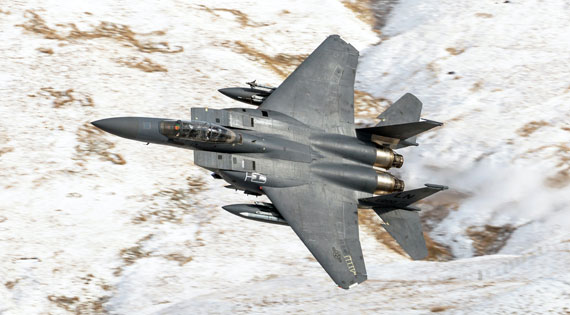Learning photography, including how to handle a professional camera, is tough enough by itself. Throw in a little movement, and getting that perfect shot can seem like mission impossible. Fast-moving vehicles such as planes, jets, and cars, can be some of the most challenging subjects to capture. Luckily, pro photographer Gary Gough has some spot-on aviation photography tips to offer.
Aviation and vehicle photography are tricky, not only due to subject movement but also the reflections, glare, and lighting involved. In this video, set at the exciting Mach Loop Experience Workshop location, Gary puts his best avaiation photography suggestions to the test. You’ll be glad to know that you can also apply these tips to fast-paced sports and wildlife photography.
Prioritize Shutter Speed
Shutter speed plays an important role when capturing fast-moving subjects like jets and planes. When shooting, Gary advises photographers to use shutter speed priority mode. A faster shutter speed freezes motion, while a slower speed blurs it. However, do also consider the speed of the subject and its distance away.
Ideally, choose a very fast shutter speed for subjects close and fast; around 1/1000 sec to 1/2000 sec. Panning is also effective at capturing fast-moving subjects at slower shutter speeds (around 1/250 sec), if necessary. That said, doing so takes practice and can result in a blurry background due to the camera movement.
Set ISO & Aperture to Auto
When shooting at faster shutter speeds, your ISO will likely be higher. You may also want to adjust your shutter speed for different planes, which can further mess with your exposure. Gary suggests you set both your ISO and aperture to auto instead. Other automatic settings to employ are your focus settings, including tracking focus. Continuous AI Servo (on Canon cameras) or AFC autofocus (for other brands) are also best.
As is selecting multiple AF focus points centrally when shooting aircraft. For metering, Gary suggests Evaluative metering; alternatively, center-weighted or spot, if you prefer. In order to improve the likelihood of getting that perfect shot, Gary also switches on burst mode. Though he suggests not to overdo it — just a few frames per second should suffice. Otherwise, you might overload your camera, missing that shot. Or end up with too many snaps from which to pick.
Hold Your Camera Right
Photograph quality often comes down to stabilization, not just the right lighting and camera settings. Holding your camera properly when shooting fast-moving subjects like planes and jets is critical for reducing dreaded blurriness. Gary trains his students to get a good grip on the camera and lens with both hands. Ideally, one hand should cradle the bottom of the camera while the other rests on the bottom of the lens. Hooking your arms into and shooting from the waist can further reduce camera shake, resulting in smoother panning and images.

Photo captured by Don Jackson-Wyatt
Pack The Correct Equipment
There is a myriad of lenses and photography equipment to choose from for each and every shoot. For airshow photography, distance is an issue. Though you can certainly play around with stock lenses, a 100-400mm telephoto lens is a great choice. With it, you can zoom in, zoom out, pan, and more. Gary uses a Canon EF 100-400mm f/4.5-5.6L IS II USM in this video. Generally, telephoto lenses are also better at capturing landscapes and shots featuring a lot of depth. When shooting objects like planes, Gary also suggests adding a polarizing filter to reduce glare from glass and metal.
Adapt to Your Subject
As Gary says, “photography is about storytelling. Tell the story….”
Each and every vehicle is unique, and airplanes are not different. From classic propeller planes to state-of-the-art military jets, every single one has its own tale to share. Playing around with lenses, camera settings, lighting, and more will help you uncover it. Capturing different types of planes also poses its own challenges.
For example, a propeller airplane can be tricky to capture at a faster shutter speed. Doing so will freeze their propellers, making the plane look as if it’s floating stationary in the sky. For this subject, Gary suggests you play around with lower shutter speeds (1/125 sec) to achieve a balance between propeller speed and image clarity.
Like This Article?
Don't Miss The Next One!
Join over 100,000 photographers of all experience levels who receive our free photography tips and articles to stay current:





